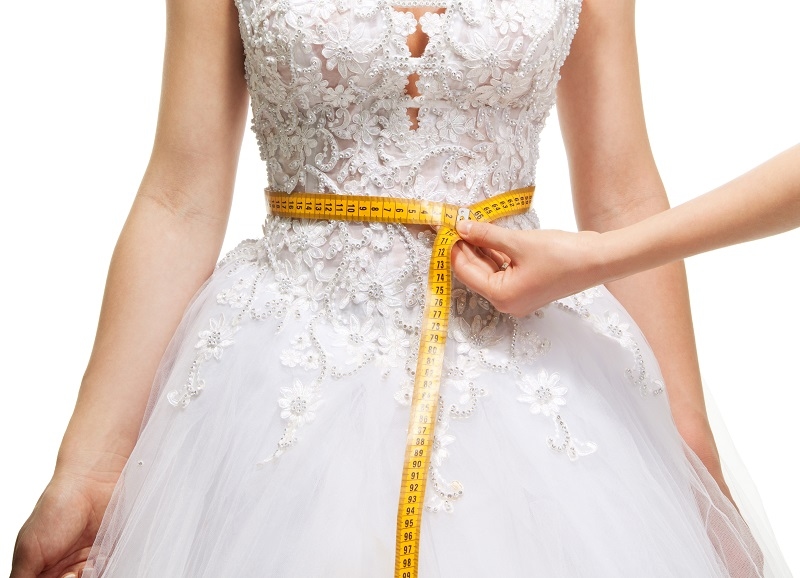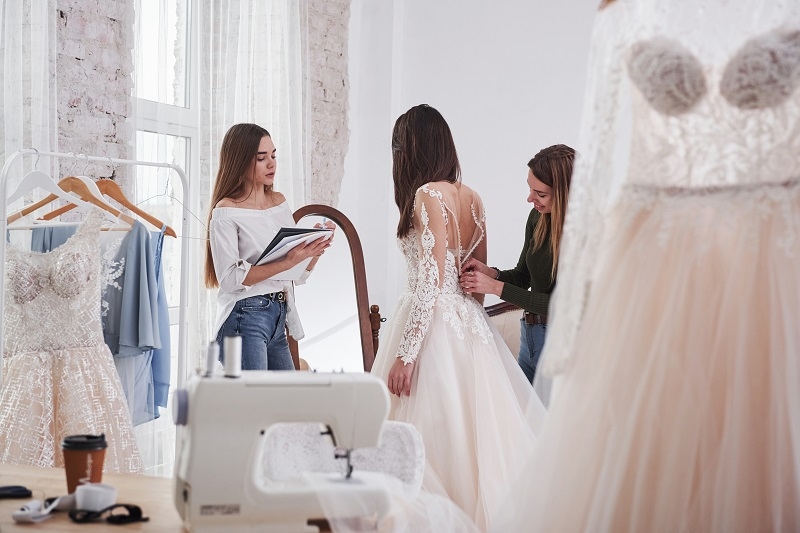
Choosing your ideal wedding dress is one of the significant aspects of wedding planning, but it only gets halfway done at the bridal boutique. Nearly every bride must have her dress altered to fit just right, and that happens in the alterations. Secrets about wedding dress alterations will get you through sooner, save money, and relieve some of the stress of getting ready for the big day. This manual covers wedding dress alteration tips, from arranging fittings to fixing common fitting issues.
Even the most gorgeous dress off the rack isn't guaranteed to fit you exactly. Bridal sizes are unpredictable, and small things such as your posture, heel height, or body shape impact a dress fit. Alterations get the dress to fit you exactly in all aspects. A professional seamstress can shrink the hemline, raise straps, or redo the bodice, making you the proud owner of a stunning dress.
One of the largest wedding gown alteration secrets is to start early. Brides will ask when to schedule an appointment for alterations, and in most instances, it will rely on your wedding timeline. For the majority of brides, fittings should start two or three months prior to the wedding date. This provides sufficient time for several appointments, typically two or three, and does not keep the gown idle without hurrying.
If you are likely to lose or gain weight, note it down before your initial appointment. Getting here too late will cause undue stress, and arriving too soon might cause extra alterations closer to the wedding. A good compromise is scheduling your first fitting some 8–12 weeks in advance of the ceremony.
Gown budgeting doesn't end at the front price label. Brides wonder, How much do alterations on a bridal wedding dress cost? The response is complex. Minimal alterations, such as taking in a gown or resetting the straps, can be less expensive. More elaborate work, such as recontouring a bodice, adding sleeves, or dealing with many layers, will be more expensive.
Average alterations vary from a few dollars for the minor adjustments to several hundred for the more intricate alterations. Brides always reserve some of the dress allowance for alterations themselves. Remember that rush orders or last-minute orders will be an additional charge over the final bill.
Even when fitted correctly, brides have problems. The most frequent wedding dress fitting problems inform you. A few of them are:
By recognizing these most-common wedding dress fitting issues in advance, you can explain them to your seamstress and not be surprised.
Preparation for alterations requires more than the dress. For optimal impact, brides should:
Keep in mind, fittings are a partnership. Your seamstress may be skilled, but your feedback makes the dress not only beautiful but also comfortable.
All alterations are not created equal. There are some that are just tweaking, and others are completely re-working the dress. Keeping in mind the variety of possibilities allows you to prepare more effectively.
Every alteration is specifically fitted to your dress fashion and personal requirements.
Selecting a seamstress can be just as essential as making the gown purchase. If they recommend a seamstress, ask to go to a bridal shop. You will want to find someone who will communicate openly with you and with whom you feel relaxed when in fitting mode.
Ask them their process, their experience and the estimated cost. Trust and comfort is key because you are not only going to depend on them but going to trust them to execute your vision.

Dress fittings may make brides feel slightly anxious, but here are just a few alterations that can improve the experience:
These are the steps you need to take to approach fittings with confidence.
Even with alterations, brides sometimes have concerns. When you have any concern, reach out to someone for assistance. It is customary to need small alterations after the second consultation. Seamstresses see people's concerns and can typically fix problems.
Remember, your comfort is key. You'll spend hours in this gown, walking the aisle and dancing at the reception. It should be comfortable, safe, and sophisticated for the entire day.
Not all brides make the same dress change journey. Some gowns require unique solutions:
These cases may require additional time and resources, making it important to plan ahead.
Even though the question of how much it costs to alter a wedding gown is frequently asked, it's wise to think beyond just purchasing your dress. Depending on the occasion, wedding guests may opt for steaming or pressing before the ceremony, garment bags for secure transportation, and preservation services afterward. Add these extras to your plan, and you'll save some surprises.
Your last appointment should provide a positive outcome. At this stage, make sure:
Walking and dancing in the gown are both viable methods to assess. Both comfort and aesthetics are important factors.
Wearing your wedding dress is an emotional and sacred moment in your life. First purchase is exciting, but alterations make it yours. You want the day of your wedding to be stress-free, and knowing how to alter your wedding dress, budget for the alterations, when to start alterations, and preparing for typical fitting issues would be helpful. If you work hard, have the right wedding dress alteration tips, and have the right seamstress, your gown will not only look great but feel great.
This content was created by AI